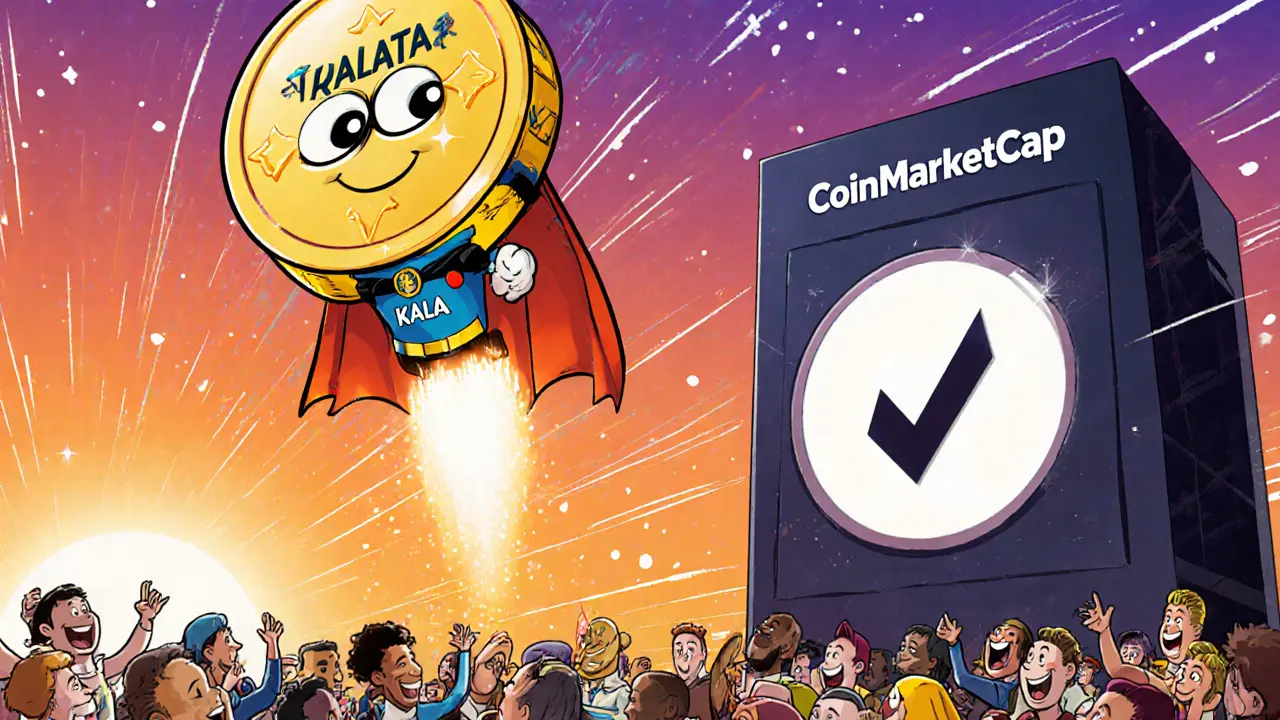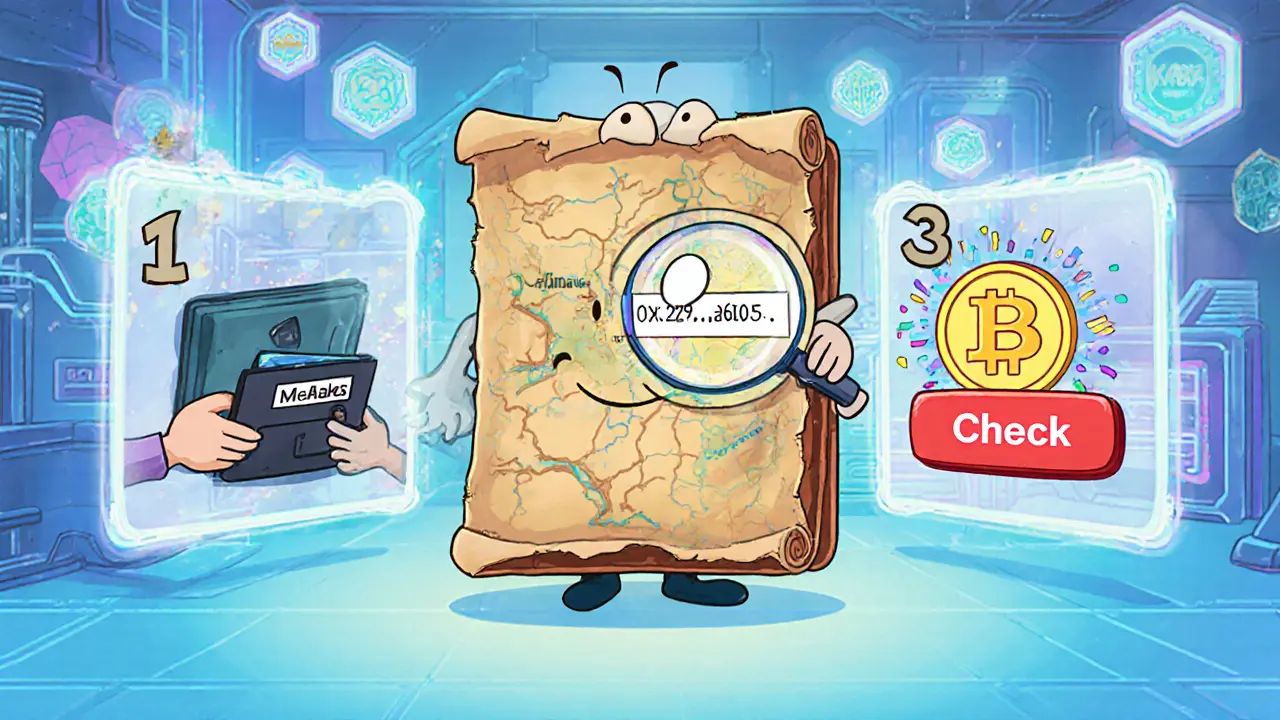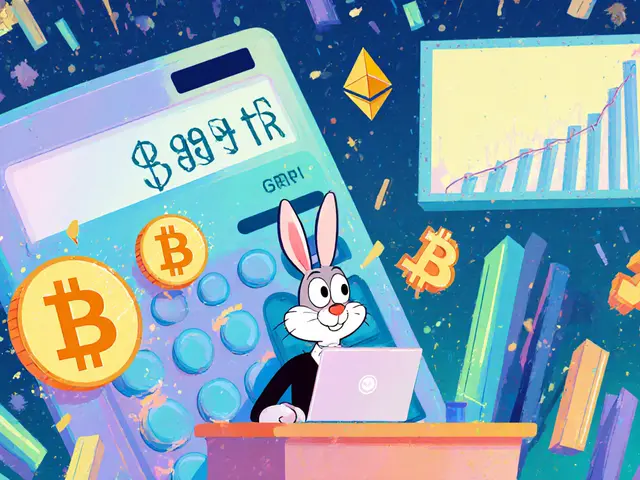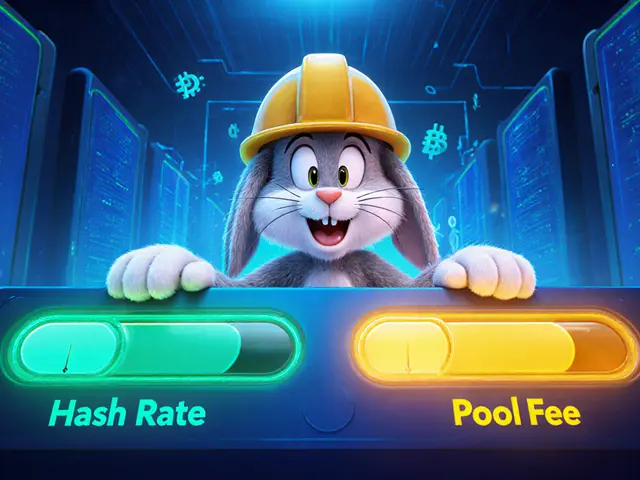
KALATA (KALA) Airdrop Claim Checker
About the KALATA CMC Airdrop
In 2021, CoinMarketCap partnered with Kalata Protocol to distribute 20,000 KALA tokens to eligible users. This tool helps you verify if your wallet received the tokens.
Total Distributed: 20,000 KALA
Eligibility Period: September 15 - October 5, 2021
Contract Address: 0x3229...a610c5
Max Supply: 200 million KALA
Circulating Supply (Oct 2025): ~35 million
Non-transferable Period: 30 days after receipt
How to Verify Your Airdrop Receipt
- Open your Ethereum wallet (MetaMask, Trust Wallet, etc.)
- Add the KALA contract address (0x3229...a610c5) if not already visible
- Check for a transaction dated between September 15, 2021 and October 5, 2021
- Look for a transaction labeled "KALATA Airdrop"
Note: If you don't see a balance or transaction, you likely weren't part of the eligible list.
Back in 2021 the crypto world saw a modest but memorable distribution called the KALATA airdrop. It paired the native KALATA (KALA) Token is the utility token powering the Kalata Protocol’s synthetic trading platform with the reach of CoinMarketCap (CMC) is the leading cryptocurrency market data aggregator that also runs a launchpad for early‑stage projects. If you’re still wondering what the campaign looked like, which rules applied, and how it fits into today’s DeFi landscape, keep reading. This guide walks you through every piece you need to understand, from token basics to the exact steps participants once followed.
Quick Summary
- 20,000$KALA were distributed to eligible participants.
- Eligibility required a handful of on‑chain and social actions (e.g., linking a CMC profile, following a YouTube channel).
- KALATA’s max supply is 200million; circulating supply sits around 35million.
- The airdrop used a custom smart‑contract (0x3229…a610c5) for automatic token delivery.
- Impact: modest community growth and early liquidity for synthetic assets.
What Is the Kalata Protocol?
Kalata Protocol is a decentralized finance (DeFi) framework that lets users trade synthetic versions of stocks, commodities, and derivatives using a peer‑to‑pool engine. Launched in 2020, the protocol introduced a “collateral‑locked‑and‑liquidated” model: issuers lock an asset as collateral, and if the tracked price moves unfavorably, the system automatically liquidates to keep the pool solvent. Decentralized price feeds pull data from reputable oracles, ensuring that synthetic prices mirror real‑world markets.
The architecture targets the growing synthetic‑assets market, where traders gain exposure to traditional finance instruments without needing a brokerage account. By bridging on‑chain liquidity with off‑chain price data, Kalata aims to democratize access to everything from S&P500 exposure to gold futures.
Tokenomics: How KALA Is Structured
The KALA token is the governance and utility token of Kalata Protocol. Its key parameters are:
- Maximum supply: 200million KALA.
- Circulating supply (as of Oct2025): ~35million.
- Contract address: 0x3229…a610c5 (Etherscan‑verified).
- Utility: Staking for fee discounts, voting on protocol upgrades, and collateral‑insurance incentives.
- Distribution plan: 20% allocated to community incentives (airdrop, liquidity mining, staking rewards), 30% to the team (with a 24‑month vesting), 25% to the treasury, and the remaining 25% reserved for future funding rounds.
Because only about 17.5% of the total supply is already in circulation, the token retains ample room for future expansion without diluting early holders.
How the CMC Campaign Was Set Up
The partnership leveraged CoinMarketCap Launchpad is a curated platform within CMC that offers early‑stage projects a way to run airdrops, token sales and community‑building campaigns. At the time, CMC’s launchpad was experimenting with low‑friction airdrop models to test audience interest. Kalata’s campaign became a proof‑of‑concept, showcasing how a DeFi project could tap into CMC’s massive user base.
Key technical steps:
- Kalata generated a airdrop‑specific smart contract that held the 20,000$KALA allocation.
- CMC integrated the contract address into its launchpad dashboard, linking it to user profiles.
- Participants completed verification steps (wallet connection, social‑media linkage). The system recorded eligible addresses.
- On the distribution date, the contract executed a batch transfer, sending the exact token amount to each verified address.
The entire process was designed to be “trust‑less”: no manual approvals were needed once eligibility was confirmed, and the blockchain log provided an immutable record of who received what.

Eligibility Requirements & Claim Process (What Participants Had To Do)
The exact checklist was never published in a single PDF, but community recollections point to the following steps:
- Step1 - CMC profile: Create a free CoinMarketCap account and verify the email address.
- Step2 - Wallet connection: Link an Ethereum‑compatible wallet (MetaMask, Trust Wallet, etc.) to the CMC launchpad page.
- Step3 - Social actions: Follow Kalata’s official YouTube channel, retweet a pinned tweet, and join the Telegram group.
- Step4 - KYC (optional): Some users reported a minimal KYC screen to weed out bots; however, the airdrop remained largely non‑KYC.
- Step5 - Confirmation: After completing the tasks, a green check appeared on the launchpad dashboard, indicating eligibility.
Once the campaign closed, the smart contract automatically transferred each participant’s share - typically a few hundred KALA tokens, depending on the total number of qualifiers.
Impact on the Kalata Ecosystem
Even though 20,000$KALA represents just 0.01% of the total supply, the airdrop served three strategic purposes:
- Community seeding: Early recipients became ambassadors, posting tutorials and sharing liquidity‑provision experiences.
- Liquidity kick‑start: A portion of the airdropped tokens was immediately staked, boosting the protocol’s staking pool and lowering fee tiers for early traders.
- Data gathering: Kalata could track which CMC users actually engaged with its platform, informing future marketing spend.
Post‑airdrop metrics (as cited in Kalata’s community updates) show a 35% uplift in daily active wallets and a 22% rise in synthetic asset volume during the following quarter.
Comparing the KALATA Airdrop to Typical CMC Launchpad Distributions
| Feature | KALATA X CMC (2021) | Typical CMC Launchpad (2022‑2024) |
|---|---|---|
| Total Tokens Distributed | 20,000KALA | 10,000‑100,000tokens (varies) |
| Eligibility Steps | Wallet link + 3 social actions | Wallet + KYC + tiered social tasks |
| Automation Level | Fully automated smart‑contract batch | Hybrid (manual review for KYC) |
| Geographic Restrictions | None reported | Often US/EU excluded |
| Post‑airdrop Incentives | Staking bonus for holders | Liquidity mining or governance voting rights |
The table highlights why the Kalata campaign felt “easy”: fewer hoops, no KYC, and immediate on‑chain distribution. Later campaigns added stricter compliance, which raised participation barriers but also mitigated fraud.
Lessons Learned & What’s Next for Kalata
From a strategic standpoint, Kalata’s early airdrop taught the team a handful of practical lessons:
- Simplicity wins attention: Users abandoned lengthy forms; a three‑click flow kept the conversion rate high.
- Smart‑contract transparency builds trust: Publishing the contract address allowed anyone to verify the distribution on Etherscan.
- Cross‑platform promotion matters: YouTube videos and Telegram chats drove organic traffic beyond the CMC audience.
- Tokenomics matter: Holding a small % of total supply meant the airdrop didn’t dilute existing holders, preserving token value.
Looking ahead, Kalata plans a second‑phase distribution targeting “active traders” who have provided liquidity for at least 30days. The upcoming event will allocate roughly 50,000KALA and will incorporate a modest vesting schedule (25% at T‑0, 75% over six months) to discourage immediate sell‑off.
How to Verify If You Received the Airdrop
If you think you might have been part of the 2021 batch, follow these steps:
- Open your Ethereum wallet (MetaMask, etc.) and view the token list.
- Add the KALA contract address (0x3229…a610c5) if it isn’t already visible.
- Check for a transaction dated between September152021 and October52021 with the label “KALATA Airdrop”.
- If you see a balance, you’re good to go. If not, the airdrop likely didn’t reach your address.
Note that the airdrop is non‑transferable for 30days after receipt, a detail recorded in the contract’s code.

Frequently Asked Questions
What was the total amount of KALA distributed in the CMC airdrop?
Exactly 20,000KALA tokens were allocated to eligible participants.
Do I still need to claim the airdrop?
No. The distribution was automatic; if you didn’t receive the tokens, your address was not part of the qualified list.
Is the KALA token tradable on major exchanges?
Yes. KALA is listed on several decentralized exchanges (Uniswap, SushiSwap) and a few centralized platforms such as KuCoin.
How does the airdrop affect KALA’s price?
Because the airdrop represented a tiny fraction of total supply, price impact was minimal. However, the subsequent staking incentives did add buying pressure.
Will there be more airdrops from Kalata?
Kalata has announced a second‑phase distribution aimed at active liquidity providers, slated for early 2026.





